Van Insulation Tips For Your Campervan Conversion
Van insulation may sound like a boring topic, but if you’re converting a camper yourself, then it is one of the most important things to do correctly.
Choosing the wrong type of insulation, or not using it correctly, can lead to uncomfortable temperatures inside your rolling home. Being too hot or too cold is annoying and can really lower morale on your trip. This is especially true if it interferes with your sleep.
Installing van insulation is one of the first steps in a conversion, so you will want to do your research before starting your build. It is also tough to go back and add insulation once your build is complete.
You would basically have to deconstruct your whole van to add it in and then rebuild, something you definitely want to avoid. This is a process you want to get right the first time.
What Is Van Insulation For?
Van insulation is the first defence against the outside temperature. Without it, your camper is little more than a tin can, and heat will escape, or enter very quickly.
You will also find it challenging to keep your van warm when the heater is on, as all of the heat will escape through the walls. The same goes for keeping it cool inside if you have an air conditioning unit.
Proper insulation is especially important if you plan on travelling in colder climates or anywhere you might want to wear a coat outside. You don’t want to have to wear a jacket inside too!
Even if you plan on only using your camper in warm climates, you will probably find it gets cool enough at night to warrant installing insulation, and you will want it to stop your van getting too hot.
Types Of Insulation
There are many different types of insulation that you can use in a camper van. Some factors in choosing what is right for you include, price, efficiency, how environmentally friendly the product is and how you plan on installing it.
We’re going to go through several types of van insulation to help you decide what will work best for your camper.
1. Spray Foam Insulation
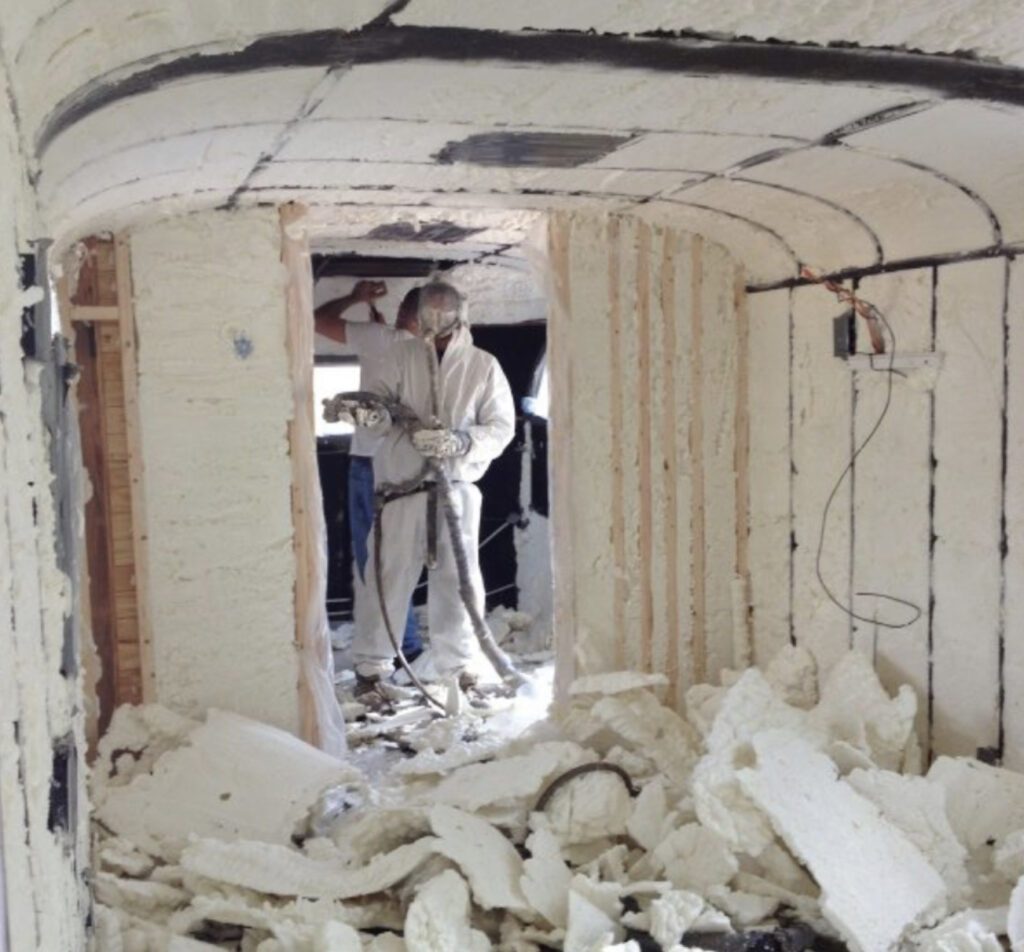
Spray foam insulation is the most efficient form of insulation that you can find. It creates a thick, even layer of insulation that expands to fill every crevice on the surface it is applied to, creating an airtight seal in all areas.
This means there won’t be any draughty spots and that you can insulate even the trickiest places. Spray foam insulation also creates a moisture barrier, ensuring no damp will build up behind your walls, due to condensation.
On the downside, spray foam insulation isn’t something you can do on your own as it requires specialist equipment. Therefore, you will need to hire a company to complete the task for you, which will be considerably more expensive than any other DIY solutions.
Another hurdle unique to spray foam insulation is trimming the foam down once it has been installed, to create a flat surface to build on. This process can be time-consuming, tricky and messy.
2. Foam Board (e.g., Celotex)
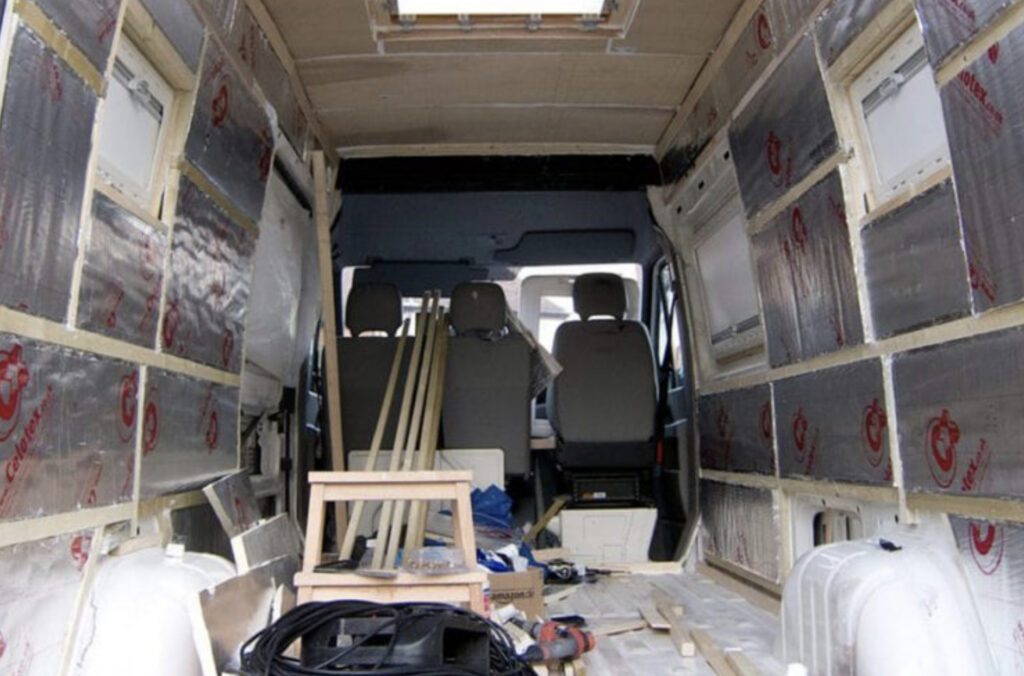
One of the most popular van insulation types is a foam board product such as Celotex. These rigid boards of insulation are easy to work with, as you can cut through them with a saw to fit the space you are working with.
Celotex comes in different thicknesses, so you can adjust accordingly depending on how much van insulation you desire. It is a very efficient product that is relatively affordable.
While the rigidity makes Celotex easy to use, it does mean it is not suitable if your camper walls are even slightly curved, which is the case for many vans.
If your insulation isn’t flush with the wall of your van, you will create an air pocket, meaning the insulation is less effective and moisture could build up. If your walls are straight, then you will need to build a frame to secure the foam boards in place.
3. Roll Insulation (e.g., Rockwool)
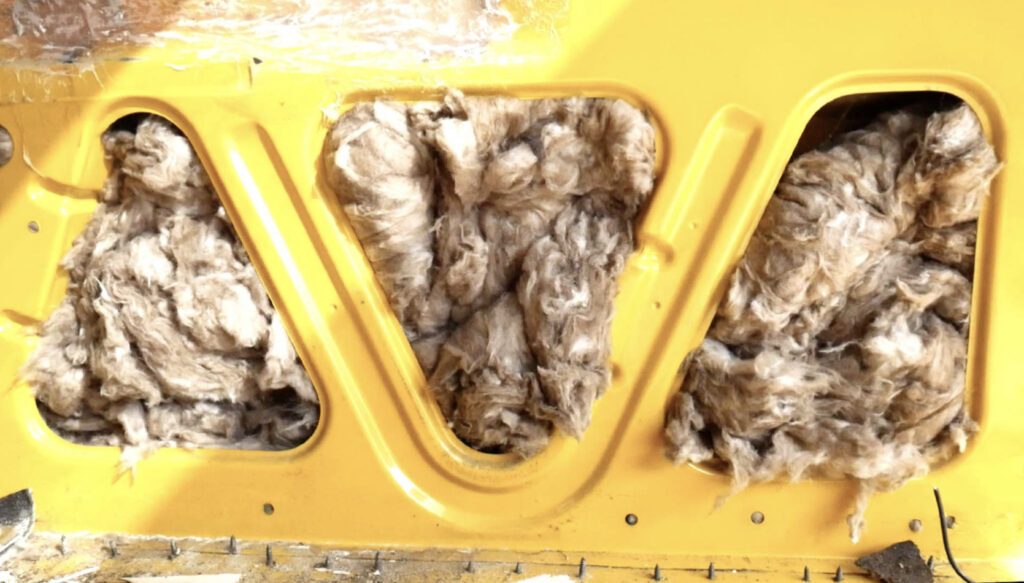
If your van does have curved walls, then Rockwool is a good van insulation solution. The easiest way to install this insulation is as you construct the wall.
As your build can feed the insulation behind your wall panels, so they hold it in place. This means you do not need to create a whole frame just for the insulation. Roll insulation is the most affordable insulation option as it is widely used and is easy to source.
However, although roll insulation is an efficient product, you may need to use more Rockwool to achieve the same level of insulation as the foam boards, as it is not as dense.
4. Sheep’s Wool Insulation

If you are conscious of the environment and are looking to convert your camper in the most sustainable way possible, then sheep’s wool insulation could be the option for you.
This product works much in the same way as roll insulation but is more environmentally friendly as it uses only natural fibres, from sheep. It is also renewable as the sheep need to be sheered every year and it can be recycled at the end of its life, or made from recycled products.
The main downfall to using sheep’s wool insulation is that it is much more expensive than other forms of insulation, except for spray foam. This is often the case with sustainable products, and if you can afford it then, in my opinion, the pros outweigh the cons.
5. Foil Insulation
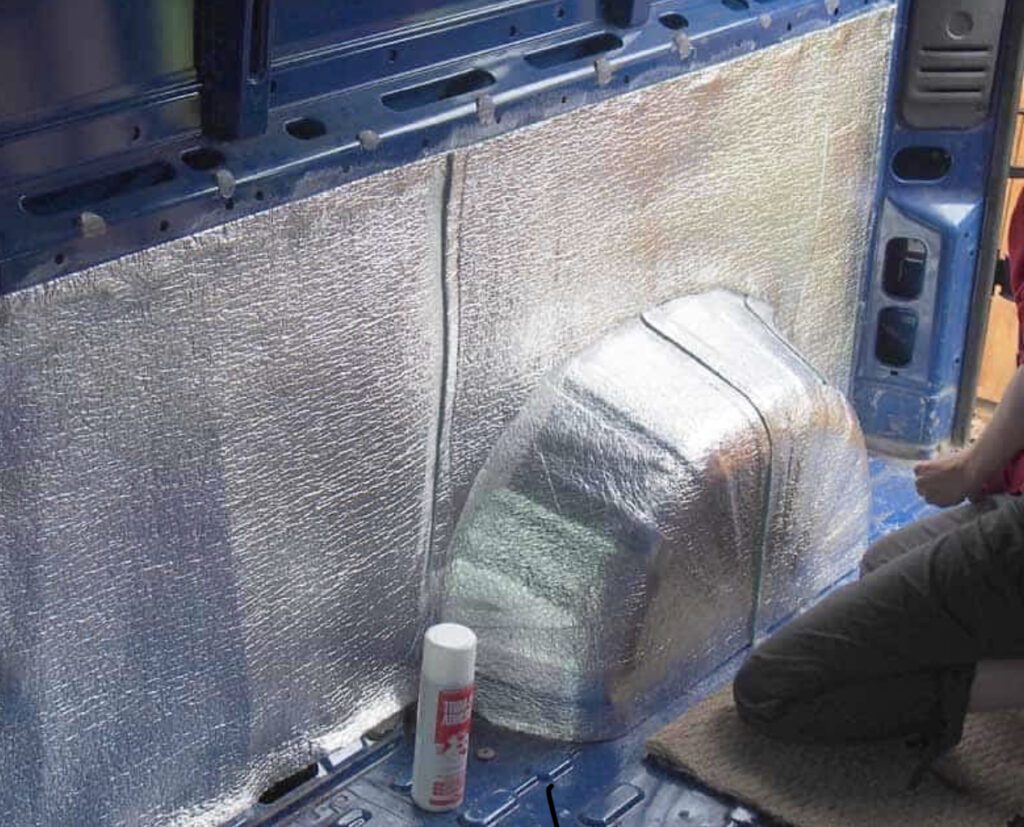
Foil insulation is a good form of van insulation when used in conjunction with other products. The idea of foil insulation is that is reflects heat back into your van. This won’t be sufficient as your only form of insulation but might help he overall effect. It is cheap and easy to work with.
Insulating The Floor
Insulating the floor of your campervan is essential to keeping your tiny home warm. We somehow forgot to insulate our floor and regret it massively every time the cold weather kicks in.
Many heaters in campers are stored at floor level, and without insulation, much of this heat instantly escapes through the thin floor.
Any type of van insulation can be used on the floor of your camper, but I think foam boards would be most effective due to their rigidity. This solid platform would make a great base to lay your flooring on and would be easy to work with.
Insulating For Hot Climates

Insulation is most effective at keeping your campervan warm in colder climates. Without it, you really wouldn’t want to travel as it just wouldn’t be fun.
However, in hot places, your camper will still get hot during the heat of the day and when the sun is shining. Insulation will help, and it won’t be so stifling, but it will still get pretty warm in there.
To alleviate this, ventilation is critical. Think open windows, doors, roof vents and fans to help keep the temperature down in your campervan. Keeping direct sunlight out of your van by parking in the shade and using insulated blinds is also an excellent way to stay cool.
How Do Windows Affect Insulation?
Camper van windows are a weak spot for temperature control, as you obviously cannot insulate them. Single glazed, glass windows, in particular, will cause a lot of heat to be lost from the interior of your rolling home.
This is the sort of window that you would find in your van if you choose to convert an ex-mini bus or passenger van. Too many glass windows can also create a greenhouse effect, making your camper unbearably hot when the sun is shining.
Therefore, you may want to think twice before buying a passenger van to convert as they can be challenging to keep warm and maintain a comfortable temperature.
If you choose to add windows into your van, then look for windows that are designed for campers as they are likely to be plastic and double glazed.
Making Insulated Blinds
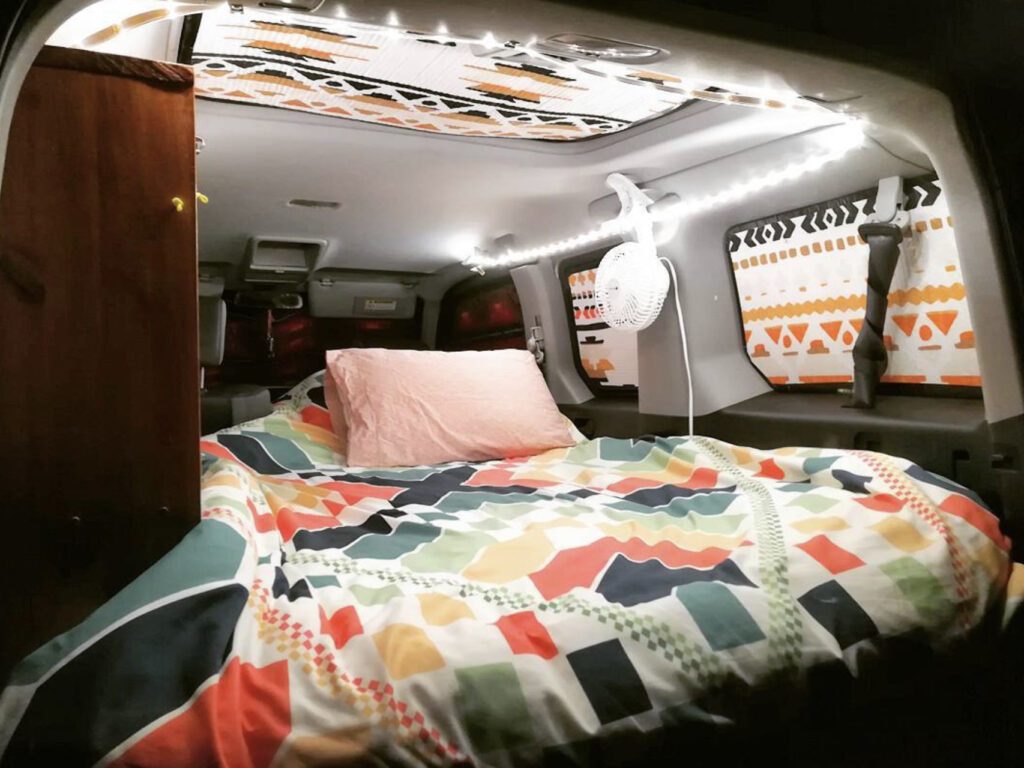
Insulated blinds for your windows, whether they are double glazed or not, are great as an extra line of defence against the sun. These blinds are easy to make and are a fantastic way to avoid the greenhouse effect.
Cut Reflectix foil insulation to size and back with a layer of insulation. Then cover the insulation (not Reflectix) in your chosen decorative fabric, and neatly stitch together.
You can secure the blinds to the windows in many ways, the easiest being suction cups that stick directly to your window. The shiny side of the blinds should face out, to reflect the sun out of your camper.
You can put the blinds up whenever you leave the van, to make sure it doesn’t get too hot when you are out. While they are most effective in warm climates, they are also useful for keeping the cold out of the van and provide an extra layer of insulation in the winter months.
Final Thoughts…
Getting insulation right will make travelling in your van much more fun, there is nothing worse than waking up in the night because you’re too cold.
Hopefully, these tips will help you decide what is right for you and get the ball rolling on your build. If you’re planning on starting a DIY campervan conversion, then check out our article on how to build a camper.
For more content form the Van Clan team, flow us on Facebook, Instagram and Twitter.

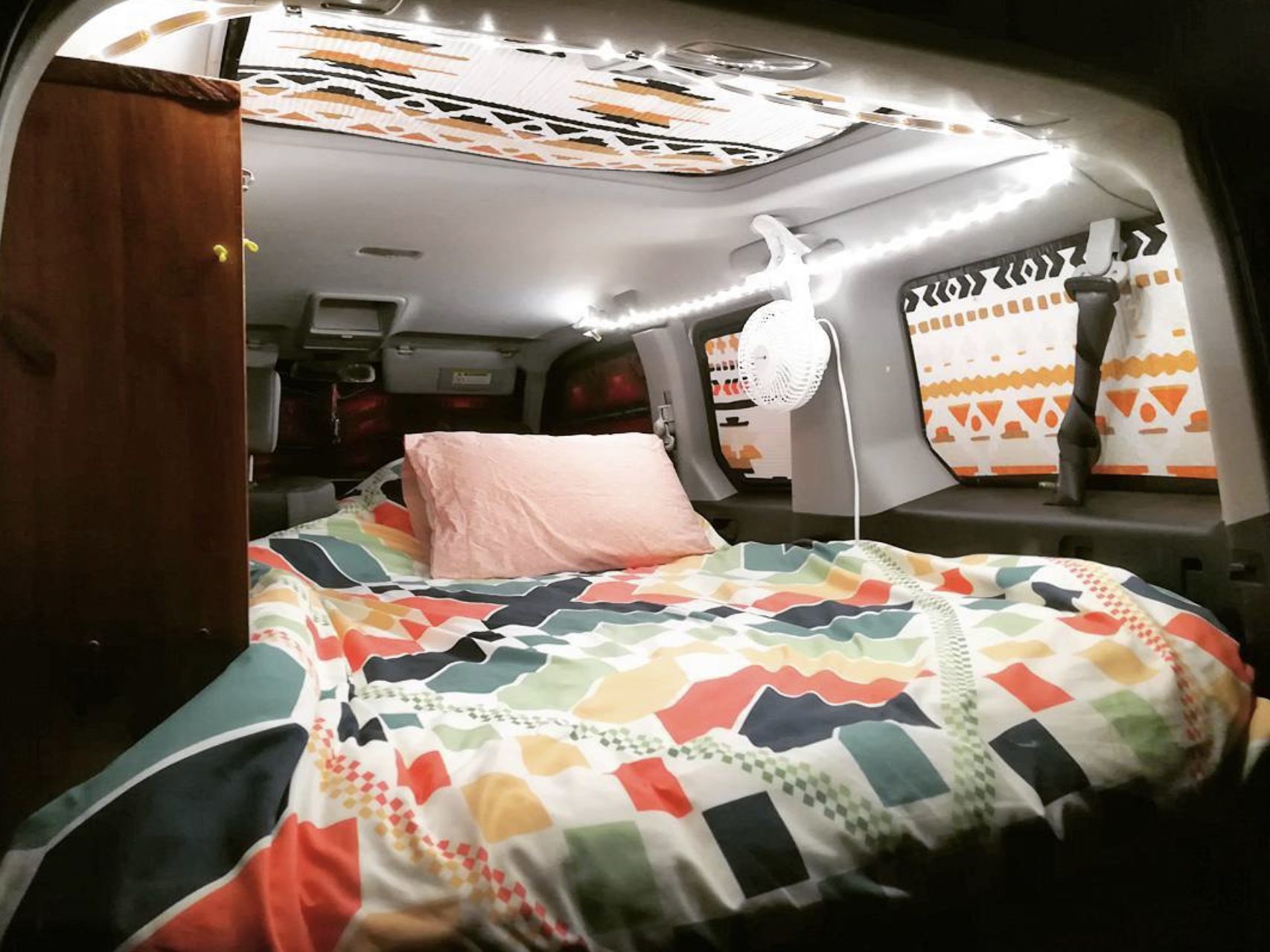

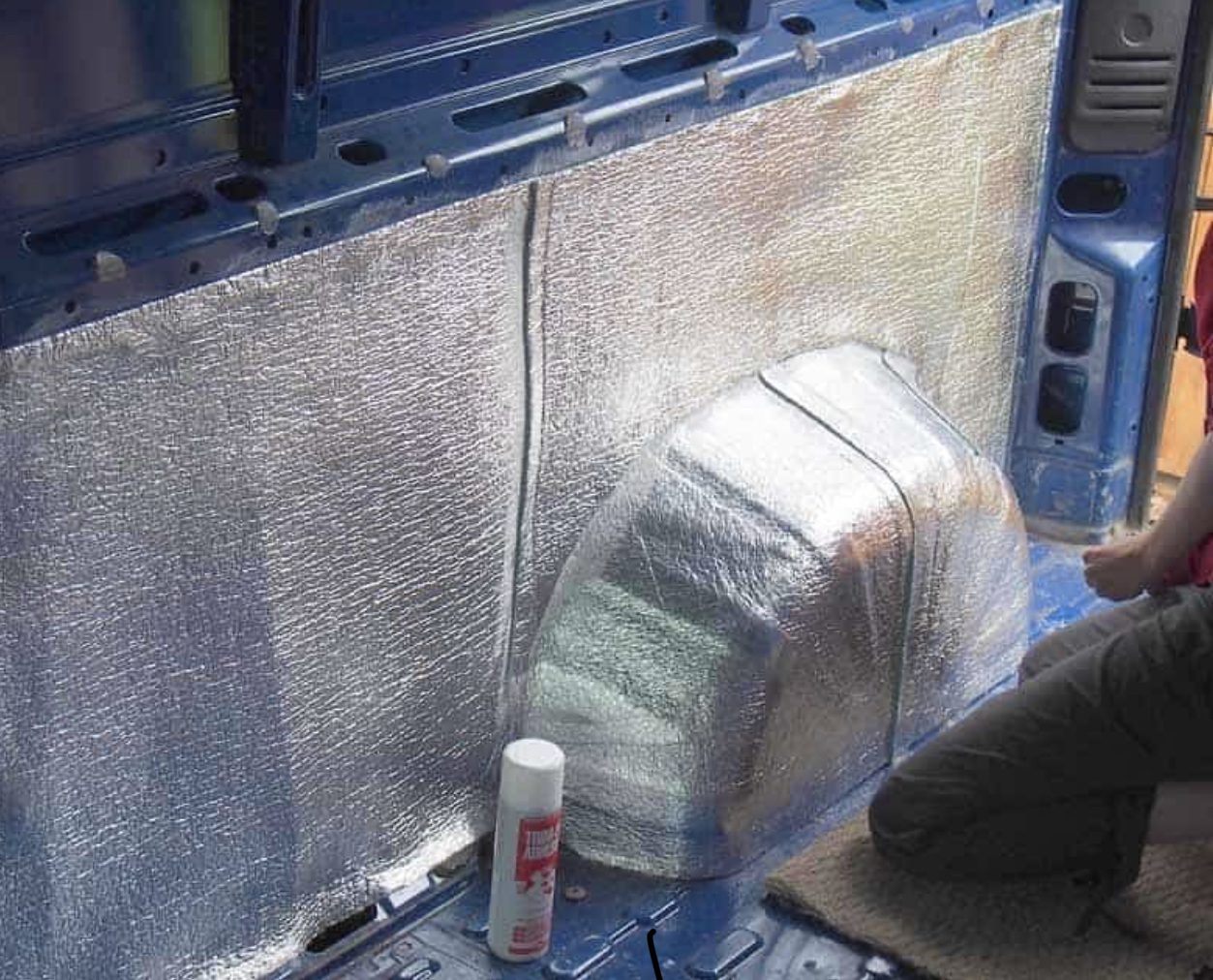
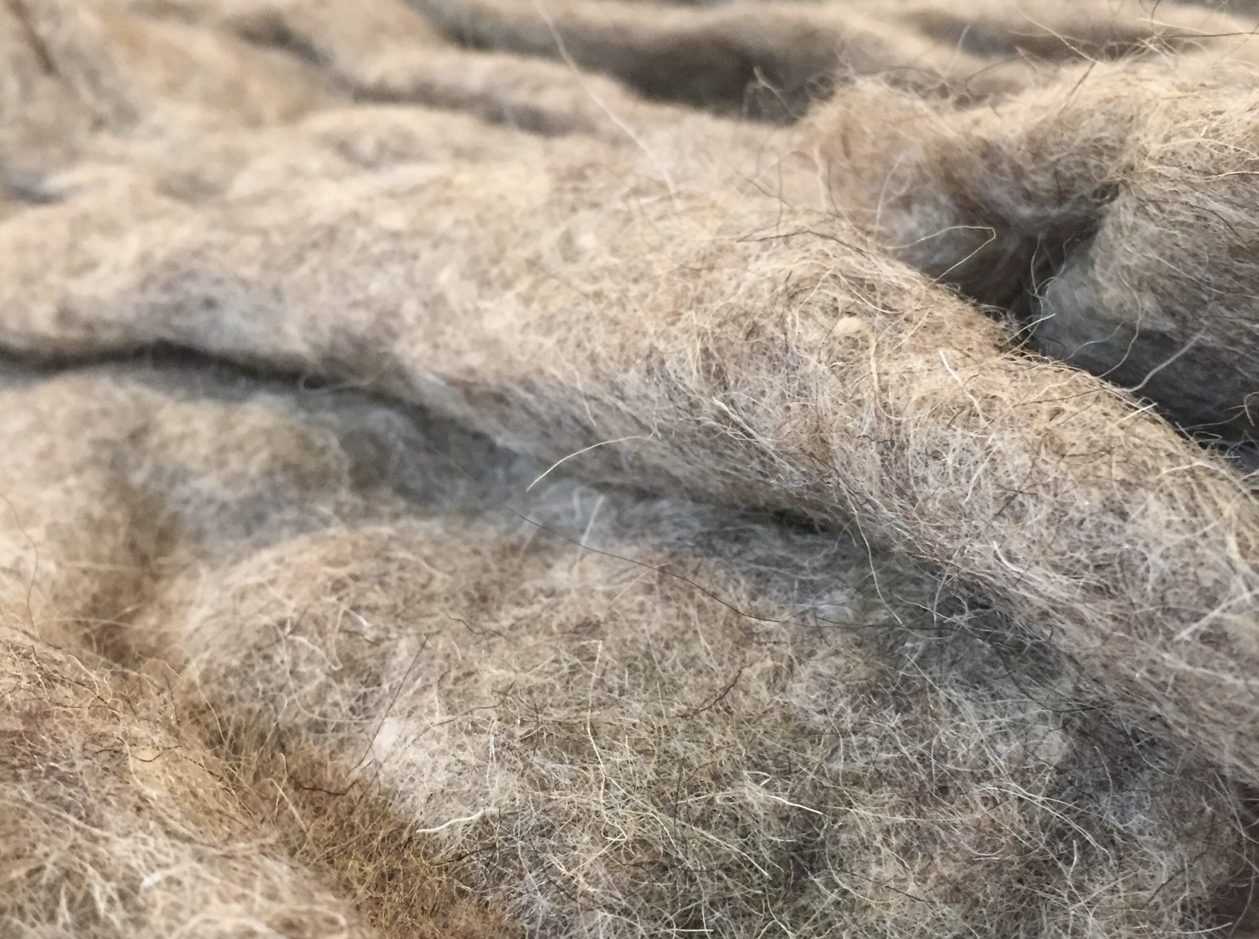
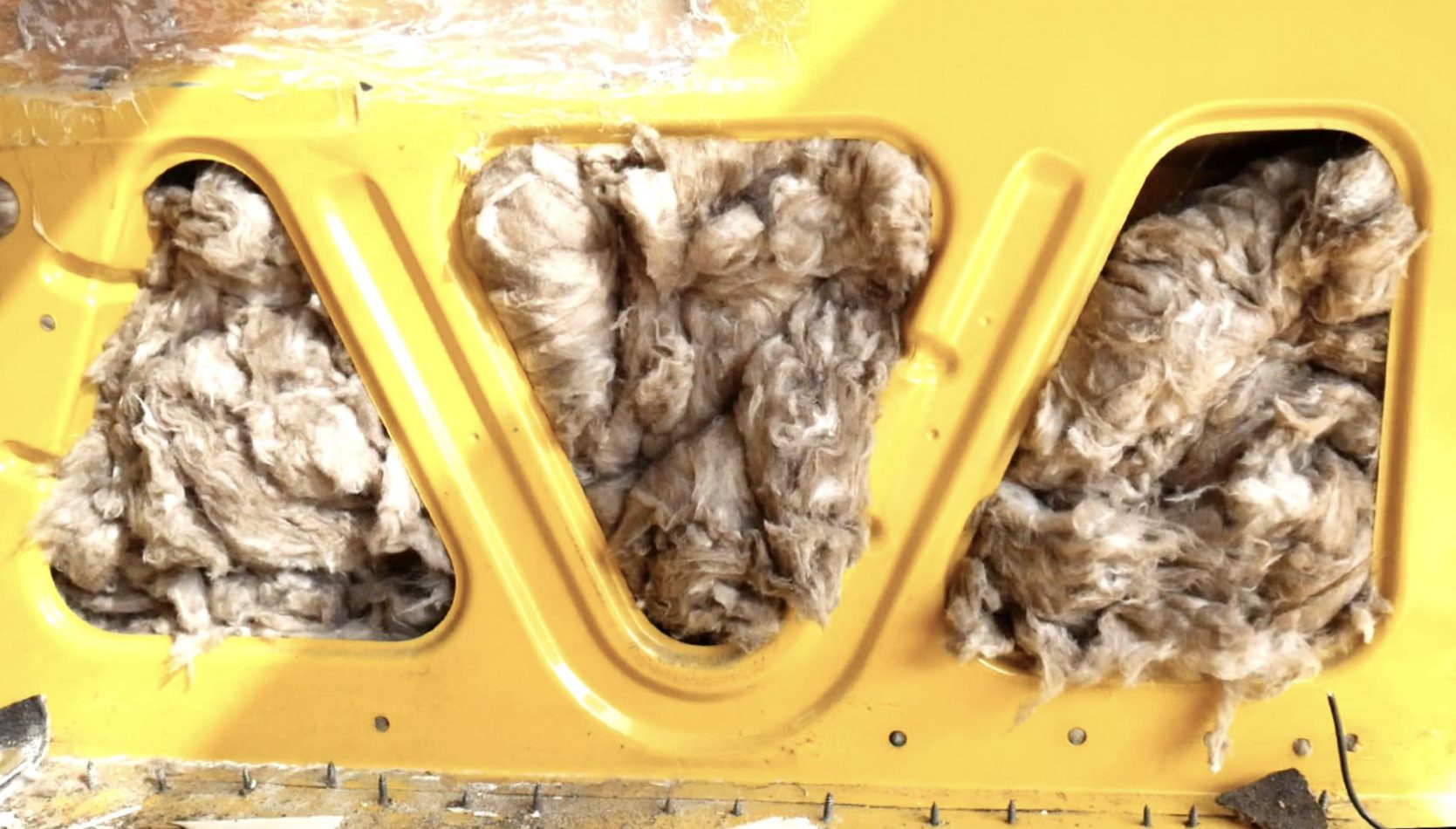
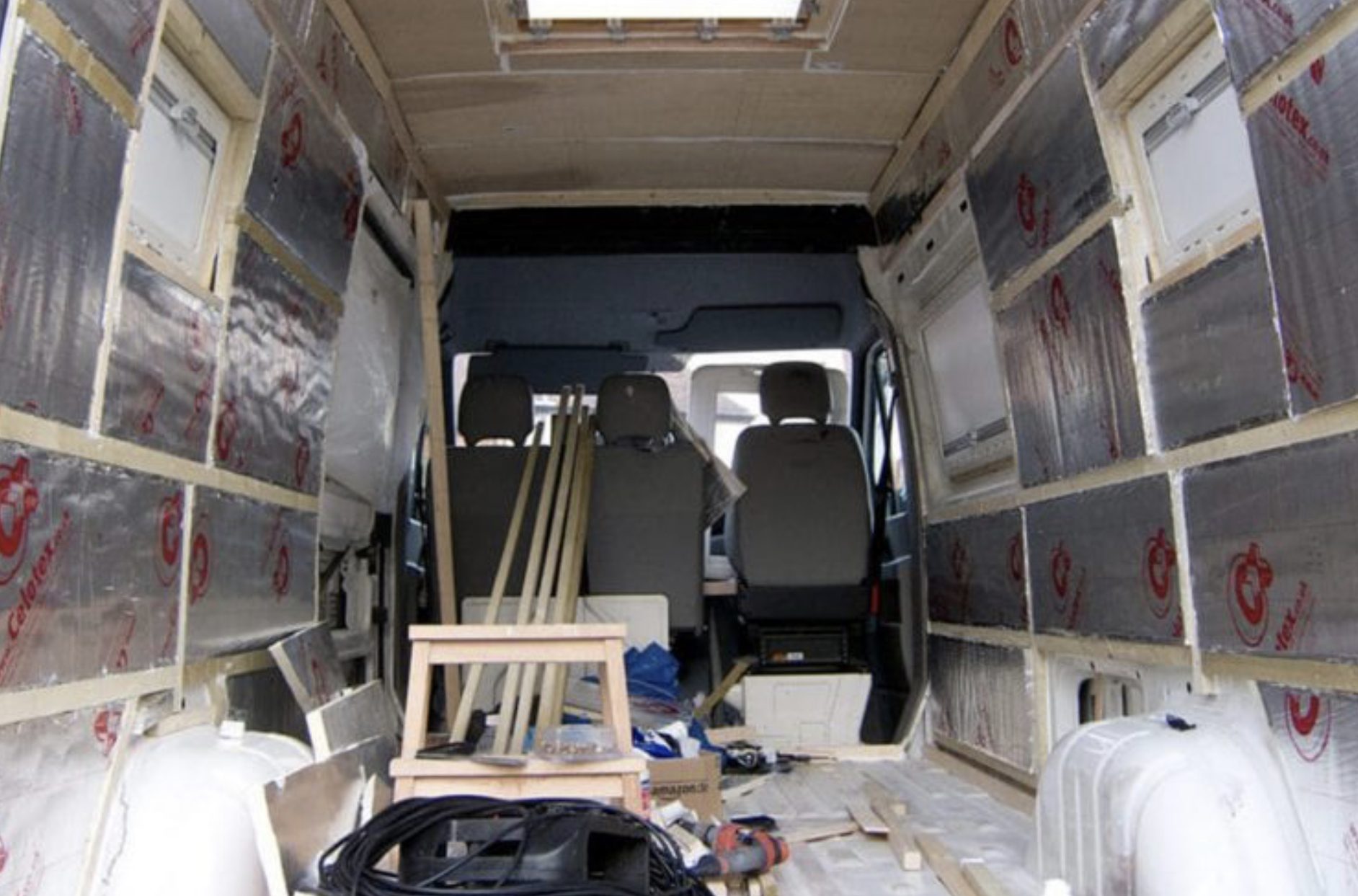
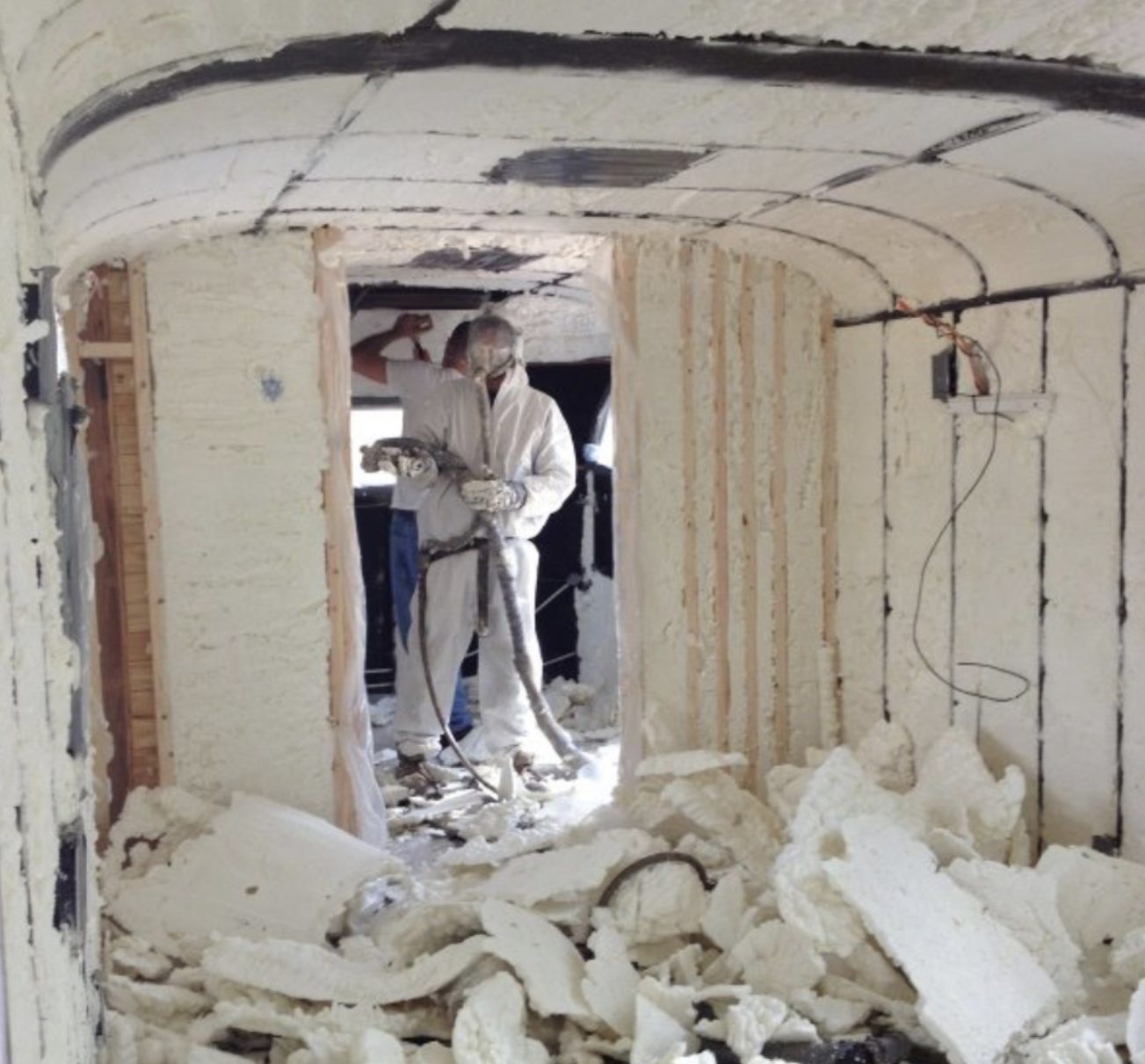


COMMENTS
Please note that all comments will be checked by our team before being approved.